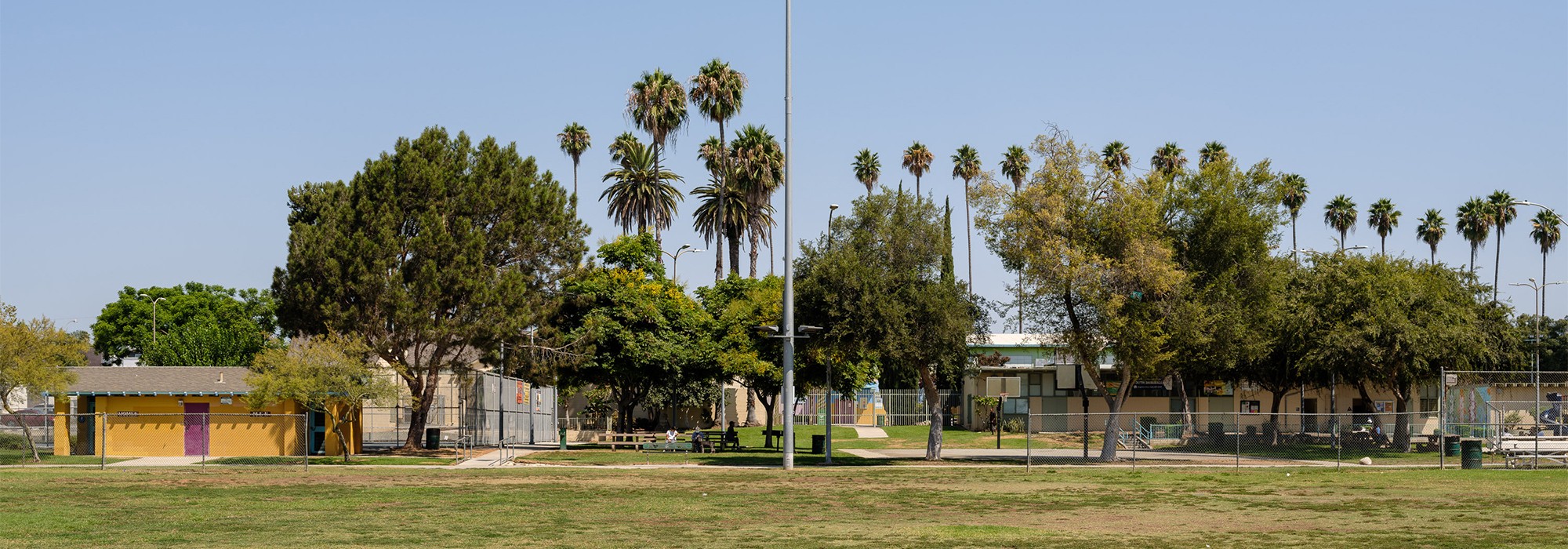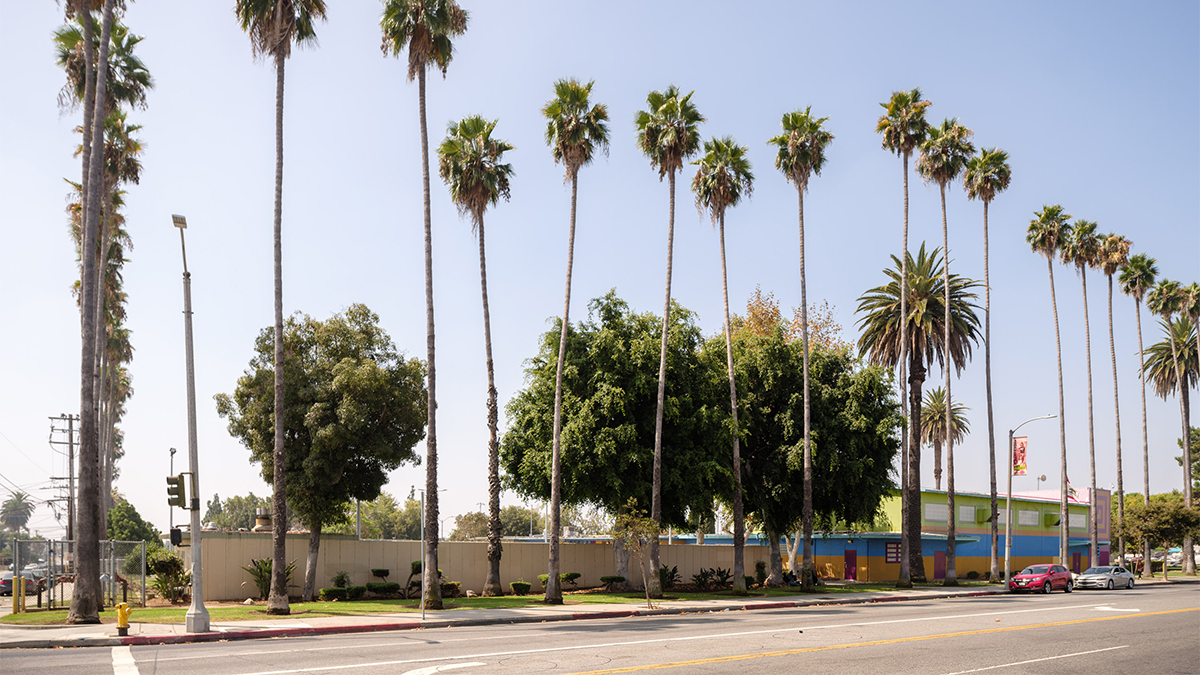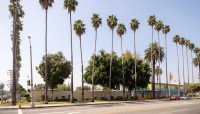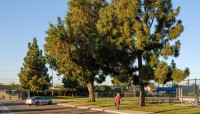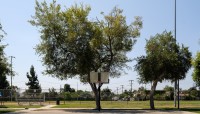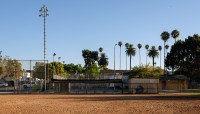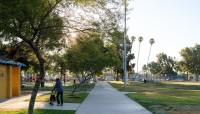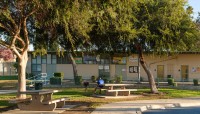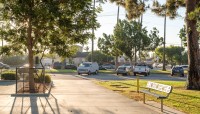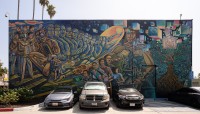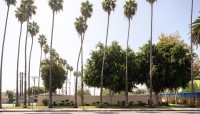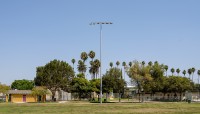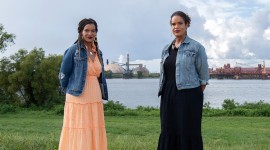Landscape Information
Framed by three streets and a residential neighborhood to the south, this approximately eight-acre, relatively level, rectilinear park was established in 1938 on land acquired from Cedars of Lebanon Hospital. The park incrementally expanded east, reaching its current size in the 1960s. By 1963 the park was roughly bisected by an east-west oriented path, creating distinct northern and southern sections.
In 1970 the site served as the terminus of the National Chicano Moratorium March. The peaceful event, attended by 20,000 to 30,000 people, devolved into chaos as demonstrators and police clashed in the park and neighboring streets. Three died, including journalist Ruben Salazar, whom the park was renamed for in September 1970. Today, the park’s northern and eastern perimeters are edged with mature palm trees, established before 1948. The northern section features recreational amenities and structures established in the mid-twentieth century, including a trapezoidal swimming pool, basketball court, community center and gymnasium. The latter faces Whittier Boulevard and is fronted to the north by a narrow lawn. The structure’s western façade is painted with the mural, The Wall That Speaks, Sings, and Shouts (2001) by Paul Botello, honoring Ruben Salazar and Chicano culture.
The southern section is marked by two ball fields, and a linear, irregularly shaped lawn interspersed with picnic tables and planted with sycamore and pine trees.
Current planning efforts led by SALT Landscape Architects include interpretive markers commemorating Salazar and the march. The park is a contributing feature of the National Chicano Moratorium March Historic District listed in the National Register of Historic Places in 2020.



